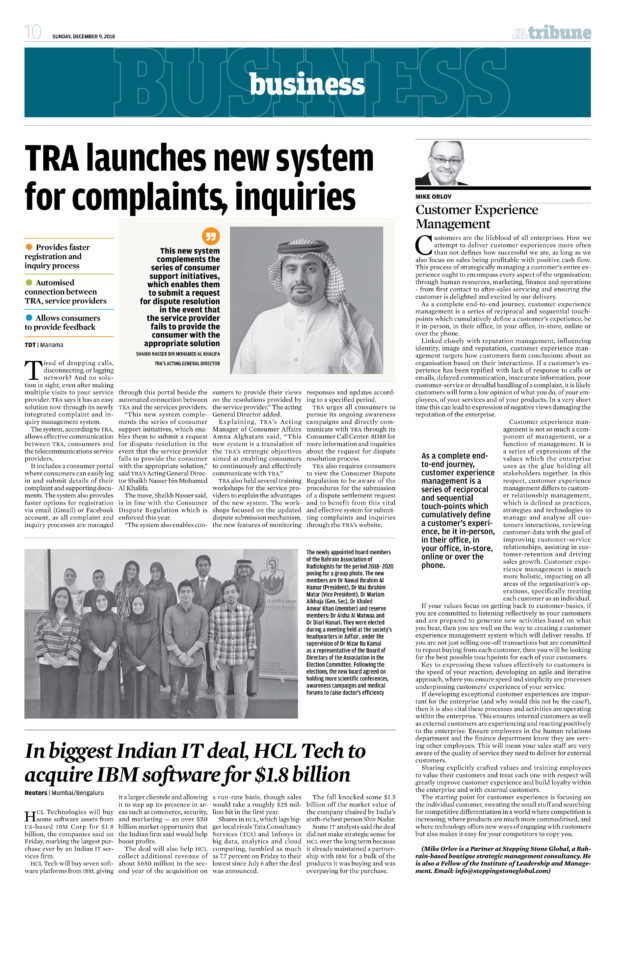Customer Experience Management
How we deliver customer experiences more often than not defines just how successful we are, as long as when delivering for customers, we also focus on sales being profitable with positive cash flow. This process of strategically managing a customer’s experience ought to encompass every aspect of the organisation through human resources, marketing, finance and operations.
How we practice reacting to customers underpins all we do in our organisations. Asking ourselves how we meet and ideally exceed customer expectations and increase their satisfaction, loyalty and advocacy are core platforms for customer experience management. This is a customer-centric strategic approach focusing on delivering, delighting and exciting, not just satisfying.
As a complete end-to-end journey, customer experience management is a series of reciprocal and sequential touch-points which cumulatively define a customer’s experience, be it in-person, in their office, in your office, in-store, online or over the phone.
Linked closely with reputation management, where how things are done in our enterprises influences identity and image, customer experience management targets how an individual customer forms conclusions about an organisation based on their interactions. If a customer’s experience has been typified with lack of response to calls or emails, delayed communication, inaccurate information, poor customer-service or dreadful handling of a complaint, it is likely this customer will form a low opinion of what you do, your employees, your services and products. In a very short time this can lead to expression of negative views damaging the reputation of the enterprise.
Customer experience management is not so much a component of management, or a function of management. It is a series of expressions of the values which the enterprise uses as the glue holding all stakeholders together. In this respect, customer experience management differs from customer relationship management, which is defined as practices, strategies and technologies to manage and analyse many customers’ interactions and broad customer data with the goal of improving customer service relationships and assisting in customer retention and driving sales growth. Customer experience management is much more holistic, impacting on all areas of the organisation’s operations, specifically treating customers as individuals.
If your values focus on getting back to customer basics, if you are committed to listening reflectively to your customers and are prepared to generate new activities based on what you hear then you are well on the way to creating a customer experience management system which will deliver results. If you are not just selling one-off transactions but are committed to repeat buying, then you will be looking for the best possible touchpoints.
Key to expressing these values effectively is the speed of your reaction; developing an agile and iterative approach, where you ensure speed and simplicity are processes underpinning your service.
If developing exceptional customer experiences are important for the enterprise then it is also vital these processes and activities are operating within the enterprise. This ensures internal customers as well as external customers are experiencing and reacting positively to the enterprise. Ensure employees in the human relations department and the finance department know they are serving other employees. This will mean your sales staff are very aware of the quality of service they need to deliver for external customers. Sharing explicitly crafted values and training employees to value their customers is key.
The starting point for customer experience management is focusing on the individual customer, sweating the small stuff and searching for competitive differentiation in a world where competition is increasing, where products are much more commoditised, and where technology offers new ways of engaging with customers but also makes it easy for your competitors to copy you.
Managing Diversity is an Enterprise Competence
Diversity needs to be an integral part of our business-planning, essential to successful projects, programmes, product-development, increasing brand value, driving sales, controlling costs and improving profits and cash flow.
Diversity matters and how we handle it will make an amazing difference to how your employees react. If they are reacting more positively then you are creating a sound platform for the sustainable success of your enterprise. Instead of thinking about diversity as a challenge, we ought to turn it into an asset. We should develop our diversity-intelligence.
By aligning diversity with our communication-practices we will inspire others by listening to them, including them, respecting them and acting on what we hear. Accepting people from different backgrounds, cultures, countries, sexes, and ages is a vital leadership tool. All our employees have different needs and we should amend our approaches to communication, engagement and motivation.
As leaders in our organisations we must adapt our communication-practices to these varied audiences. Remember our number one customers are our people; they will not just ‘do as they are told’.
Explicitly deciding to manage diversity in our organisations provides us with fresh insights aiding our understanding of our employees. We will also find new ways to engage with our people; the key to harnessing and releasing their creative talent.
This is especially true in today’s global marketplace and is relevant for our region given the drive for local/national recruitment.
As organisations interact with different cultures and clients and our enterprises are staffed by people from all over the world we must encourage and embrace learning from, and sharing knowledge through, workplace-diversity. By stimulating transfer of knowledge we will enable a higher percentage of future local recruitment to staff our enterprises
We must therefore explicitly address and then manage diversity in our workplaces. Initially we need to accept and identify our own blind-spots which are roadblocks to our personal success as effective leaders. We have to understand how our own perceptions, and assumptions, which stem from these perceptions, are unconscious biases influencing our opinions and decisions.
We need to focus on adopting approaches to counter personal perspectives. This will help us limit poor-judgement and lead to inaccurate conclusions. With greater openness we will become more sensitive to what is going on around us and so our levels of approachability will increase – ensuring our employees feel as if they are being well-regarded, not just assets to be squeezed.
We will stimulate a welcoming, relationship-focused reputation by recognising the damage which can flow from only listening to our own point of view, reinforced by those who see political advantage in always agreeing with the boss.
We will be then surprised by just how many people in the workplace will want to come and talk to us; stimulating greater communication is one of the key issues which arises so often in our briefing sessions in most enterprises. The answers lie in how open we are to listen to others and how easy we make it for people to come and talk to us and then, most importantly, taking relevant actions as a result of our listening.
As has been often quoted, ‘diversity is actually about understanding each other and moving beyond simple tolerance to embracing and celebrating the rich dimensions within each individual’. We will not only accept each other but we will enjoy and benefit from our differences, exploring these differences in a nurturing environment. Employees will feel as if they belong, feel cared for and feel respected. Then they will deliver their best work and do much more than ‘what they are told to do’. By starting to explicitly manage the benefits of a diverse workplace, you are ensuring more chances of a sustainable and successful future for you, your employees and your enterprise.

